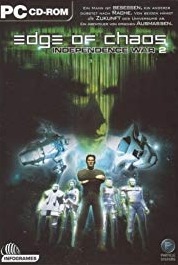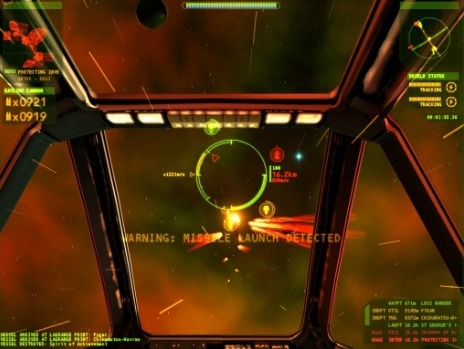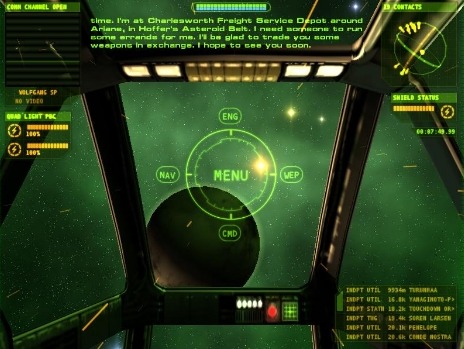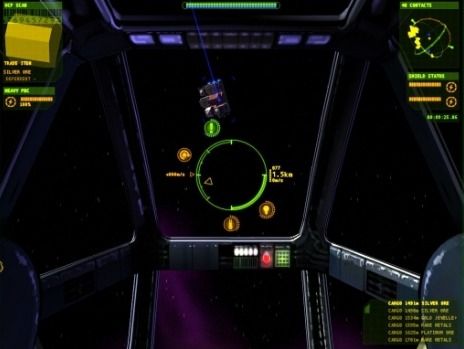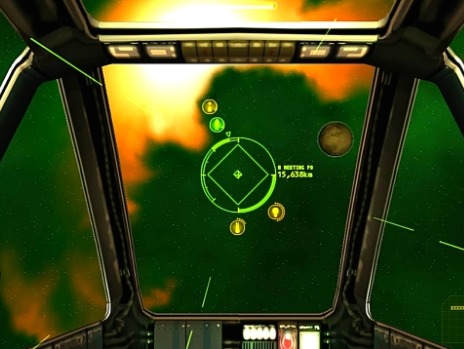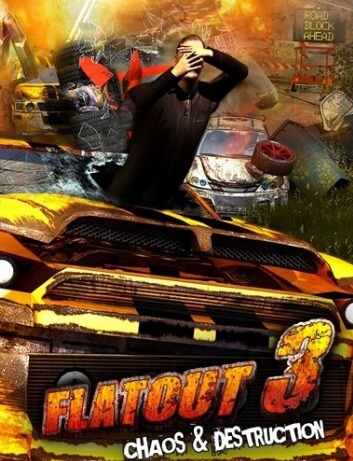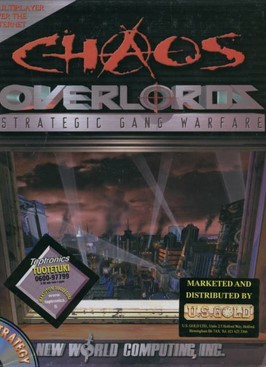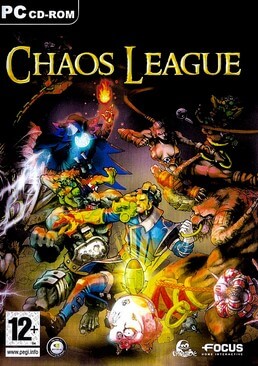Upon returning to his grandmother's base, Cal begins to set up his own piracy organization. Other groups in Hoffer's Wake begin to notice his work, and as he advances in fame and fortune he learns more about the current situation affecting the Badlands. For a long time, a group called the Marauders have been attacking at random—essentially terrorizing the people of the Cluster. Despite numerous attempts to run them down, the Badlands government and gangs have had no luck in stopping the attacks: the Marauders don't seem weakened even by major losses, and they don't seem to have any single base of operations.
The player is soon given access to other systems in the Cluster, with the assignment to find help fighting the Marauders in Hoffer's Wake. Most are only too happy to lend ships, supplies, and personnel once their own Marauder problems are taken care of, and the Marauders are successfully driven from Hoffer's Wake before long. However even that loss didn't slow them down, and further investigation on Cal's part reveals that they have been maintaining their primary base in the Dante system, long abandoned and thought uninhabitable after the unstable binary star flooded the system with radiation and cut it off from outside travel. The Rebel Fleet, now very large and well-organized, mounts a successful assault—only to be nearly destroyed anyway when the Marauders receive help from the Maas Corporation, who started the Marauders to "keep you peasants in line."
The Rebels can't hope to directly match Maas's forces, so they fall back and try to think of alternative strategies. They conclude that the most effective action would be to find help outside of the Badlands, so they attack and secure the Santa Romera Jump Accelerator, a highly advanced piece of technology that allows travel over significantly longer distances than even Lagrange points. Cal arrives in the Fomalhaut system in the Gagarin Cluster to find much the same situation as in the Badlands: oppressive corporate rule, roving Marauders, and a desperate need for assistance.
After working for a while, Cal receives a seemingly innocuous mission in which he is sent to spy on a number of corporate cruisers in the Gagarin Cluster. The story takes a sharp turn when, against Caleb Maas's wishes, corporate scientists activate an alien artifact that Cal himself stole for them, thinking to use it as some sort of weapon. The device goes out of control and begins to emit glowing red alien ships that eat (and thus destroy) any advanced power sources (such as ships) in their path; within days, the entire Gagarin Cluster is overrun. Cal and the fleet hold the aliens back from the Fomalhaut Jump Accelerator as refugees escape, then dash through at the last second and destroy the Accelerator, effectively isolating the Badlands indefinitely from the rest of human civilization. Cal remarks that they are safe from the aliens, but he's not sure about human civilization elsewhere.
The gameplay is a mix of free movement in space and missions. In free play, Cal can act independently, move throughout the Hoffer's Wake system and eventually the entire Badlands Cluster, and steal cargo. Game missions allow the player to gain new weapons and ships, and contribute to the rebellions against the corporations that control the Badlands.
Development
The technological improvements over the first game included support for Direct3D compatible hardware accelerated 3D graphics, network multiplay and a new user interface. Edge of Chaos gave a nod to Elite style gameplay by adding free roaming piracy to the Independence War games' universe. The familiar Newtonian mechanics obeying flight model with a flight computer assistance was retained, although combat was somewhat simplified and made more accessible to the player.
Edge of Chaos was initially developed for both Windows based PCs, PlayStation, Nintendo 64 & Dreamcast, but the PlayStation, Nintendo 64 & Dreamcast version was cancelled. The dual platform development affected some design decisions. Most of the ship's function interface was made navigable through a joystick hat control, but on the negative side, partly due to being designed for a game console without a hard disk, game progress could only be saved between missions, in the home base.
The game was a critical, but not financial, success, contributing to the eventual acquisition of developers Particle Systems by Argonaut Games, which changed the team name to Argonaut Sheffield. Edge of Chaos was distributed by Infogrames Entertainment.
Reception
Independence War 2 was a nominee for Computer Gaming World's 2001 "Best Simulation Game" award, which ultimately went to IL-2 Sturmovik.
